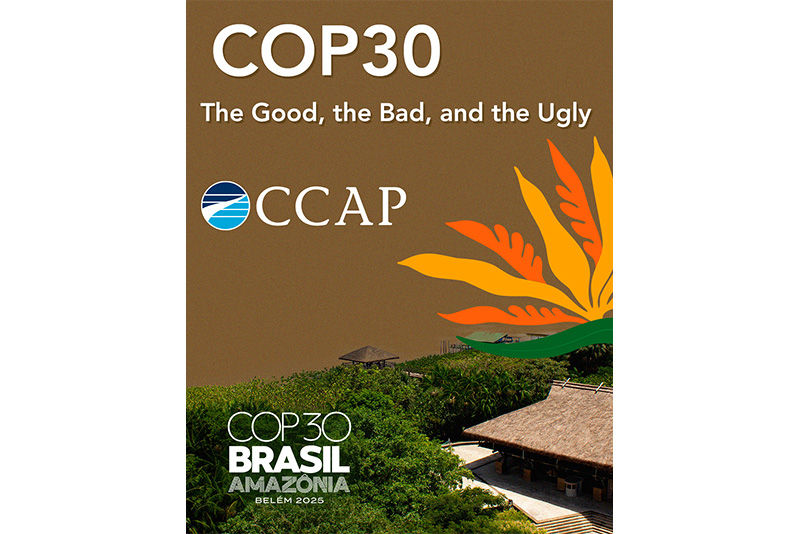International Climate Mitigation in 2013: Fallow Ground or Transformational Change?
- Ned Helme
- May 12, 2013
- 4 min read
“Policy Insights” discuss practical climate change solutions that are emerging from CCAP’s extensive on-the-ground work in developing countries and internationally. Initially they will focus on the effective implementation of nationally appropriate mitigation actions (NAMAs) by developing countries.
The Doha climate change conference last year marked the end of a major negotiation cycle and the start of a new one. Parties are proceeding with two workstreams: one to deliver a new legal agreement, applicable to all Parties, by 2015 to take effect from 2020, and one to enhance mitigation ambition before 2020. Alongside the implementation of a second Kyoto commitment period through 2020, Parties are working to achieve their pledges under the Convention, operationalize the Green Climate Fund and the Technology Mechanism, develop a new market-based mechanism under the Convention and establish institutional arrangements on loss and damage. Without a clear pathway to the 2015 agreement, it appears likely that the next year of international negotiations will be one of regrouping and fermentation of new ideas as Parties seek a comprehensive legal approach.
The first negotiation session of 2013 in Bonn last week showed a constructive start towards designing this 2015 agreement. Important negotiating parties stressed the need for a legally binding deal in 2015. The negotiations will now focus on further defining what is called “the spectrum of commitments” of parties as of 2020. This broader scope of future greenhouse gas mitigation goals can include absolute and relative caps, but also sectoral policy and measures. It is important that the future deal includes sufficiently solid monitoring, reporting and verification tools and a high level of transparency as to check and ensure consistency of these commitments with the ultimate goal of avoiding dangerous climate change.
But while transformation is slow in the negotiations, a very different situation is unfolding on the ground when it comes to nationally appropriate mitigation actions (NAMAs).
Developing countries now have an enabling framework to move ahead with pledged mitigation through both unilateral and supported actions that can go far beyond the limits of the Clean Development Mechanism (CDM). Whereas CDM investment has depended on demand for profit-driven offsetting, the NAMA framework focuses on the value to developing countries of achieving their own sustainable development priorities – but in ways that are smarter and faster by directing public-sector support from donor countries to maximize climate benefits while mobilizing new private-sector investment. The NAMA framework can deliver meaningful change at sectoral and national scales. Central to the NAMA concept is that climate mitigation and sustainable development goals can go hand in hand.
NAMA proposals are emerging…
Over the past two years, leading developing and donor countries have been working together at the frontier of NAMA design and to develop a pipeline of innovative NAMAs. CCAP has been facilitating this effort in Latin America and Asia through its Mitigation Action Implementation Network (MAIN) and NAMAs are now emerging from multiple countries and in diverse sectors. For example, Colombia is exploring how NAMAs can be used to promote transit-oriented development, improve urban planning and achieve affordable housing. By blending low-income and market-rate housing with commercial uses to create neighborhoods where people can safely walk, live, work, shop and play, these areas could transform Colombian cities. By changing long-term land use patterns, the TOD NAMA ensures reductions in greenhouse gases for decades by cutting driving growth by 25 percent.
…and NAMA finance is emerging…
Cultivating ambitious mitigation action on this fertile ground will require seed funding from donor countries, and that is emerging as well. Before the Green Climate Fund becomes operational, bilateral agreements can deliver strategic finance where it is needed and ensure that the outcomes for both sustainable development and climate change mitigation can be achieved. For example, the governments of Germany and the UK have announced a joint effort to launch an International NAMA Facility with funding of €70 million. A competitive process will be used to select transformational NAMA activities with a focus on short-term delivery. Finance will take the form of grant-based instruments or concessional loans. Detailed selection criteria have been drafted and the first tender round is expected to run from June to July/August 2013. (See https://www.gov.uk/government/publications/information-about-the-nationally-appropriate-mitigation-actions-nama-facility.)
…so we just need to bring it all together.
What we need now is a way to accelerate the matching of promising NAMA concepts with enabling investment flows. The Center for Clean Air Policy is responding to this need by organizing a Global NAMA Financing Summit in Copenhagen on 15-17 May 2013. Developing countries with NAMA proposals will come together with donor countries with the goal of identifying shared interests and overcoming barriers to agreements that will make NAMA implementation a reality in the short term. For a recent article on this initiative, see my op-ed for The Energy Daily.
If in the coming months financial flows from the public and private sectors can be channeled toward emerging NAMA proposals with effective MRV provisions that build confidence in the system, then perhaps we will look back on 2013 not as a year of fallow ground, but as a turning point for growing the kind of groundbreaking investment in lower-emission sustainable development that will support a global pathway toward stabilization.
These NAMAs and their financing could be the political catalysts for a 2015 international climate agreement. By demonstrating that NAMAs driven by sustainable development needs can materialize if the right financial support is provided, trust in the climate negotiations can be restored and broader commitments by all parties could emerge.




Comments